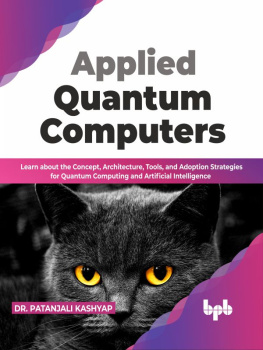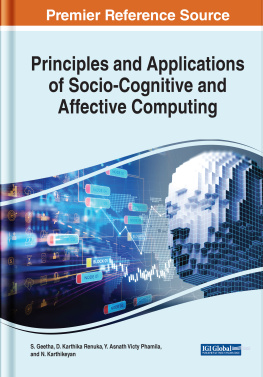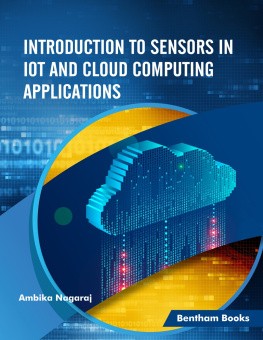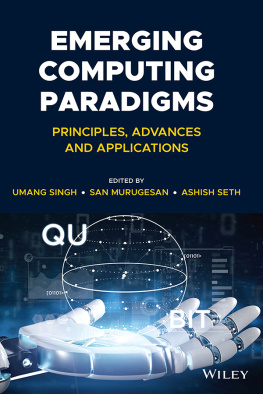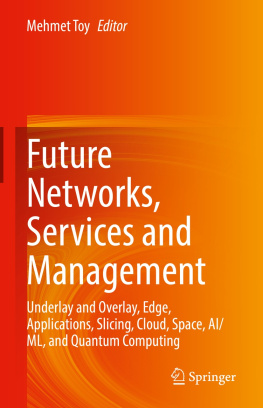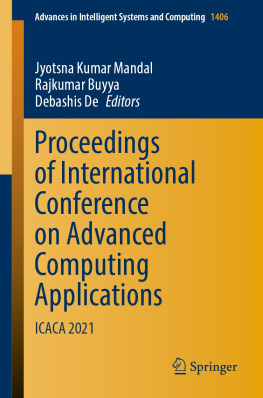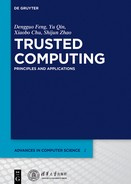Guo Minyi - Pervasive computing: concepts, technologies and applications
Here you can read online Guo Minyi - Pervasive computing: concepts, technologies and applications full text of the book (entire story) in english for free. Download pdf and epub, get meaning, cover and reviews about this ebook. year: 2016, publisher: CRC Press, genre: Home and family. Description of the work, (preface) as well as reviews are available. Best literature library LitArk.com created for fans of good reading and offers a wide selection of genres:
Romance novel
Science fiction
Adventure
Detective
Science
History
Home and family
Prose
Art
Politics
Computer
Non-fiction
Religion
Business
Children
Humor
Choose a favorite category and find really read worthwhile books. Enjoy immersion in the world of imagination, feel the emotions of the characters or learn something new for yourself, make an fascinating discovery.
- Book:Pervasive computing: concepts, technologies and applications
- Author:
- Publisher:CRC Press
- Genre:
- Year:2016
- Rating:3 / 5
- Favourites:Add to favourites
- Your mark:
- 60
- 1
- 2
- 3
- 4
- 5
Pervasive computing: concepts, technologies and applications: summary, description and annotation
We offer to read an annotation, description, summary or preface (depends on what the author of the book "Pervasive computing: concepts, technologies and applications" wrote himself). If you haven't found the necessary information about the book — write in the comments, we will try to find it.
Guo Minyi: author's other books
Who wrote Pervasive computing: concepts, technologies and applications? Find out the surname, the name of the author of the book and a list of all author's works by series.
Pervasive computing: concepts, technologies and applications — read online for free the complete book (whole text) full work
Below is the text of the book, divided by pages. System saving the place of the last page read, allows you to conveniently read the book "Pervasive computing: concepts, technologies and applications" online for free, without having to search again every time where you left off. Put a bookmark, and you can go to the page where you finished reading at any time.
Font size:
Interval:
Bookmark:

Pervasive Computing
Concepts, Technologies and Applications
Pervasive Computing
Concepts, Technologies and Applications
Minyi Guo Jingyu Zhou
Feilong Tang Yao Shen

CRC Press
Taylor & Francis Group
6000 Broken Sound Parkway NW, Suite 300
Boca Raton, FL 33487-2742
2017 by Taylor & Francis Group, LLC
CRC Press is an imprint of Taylor & Francis Group, an Informa business
No claim to original U.S. Government works
Printed on acid-free paper
Version Date: 20160609
International Standard Book Number-13: 978-1-4665-9627-6 (Hardback)
This book contains information obtained from authentic and highly regarded sources. Reasonable efforts have been made to publish reliable data and information, but the author and publisher cannot assume responsibility for the validity of all materials or the consequences of their use. The authors and publishers have attempted to trace the copyright holders of all material reproduced in this publication and apologize to copyright holders if permission to publish in this form has not been obtained. If any copyright material has not been acknowledged please write and let us know so we may rectify in any future reprint.
Except as permitted under U.S. Copyright Law, no part of this book may be reprinted, reproduced, transmitted, or utilized in any form by any electronic, mechanical, or other means, now known or hereafter invented, including photocopying, microfilming, and recording, or in any information storage or retrieval system, without written permission from the publishers.
For permission to photocopy or use material electronically from this work, please access www.copyright.com (http://www.copyright.com/) or contact the Copyright Clearance Center, Inc. (CCC), 222 Rosewood Drive, Danvers, MA 01923, 978-750-8400. CCC is a not-for-profit organization that provides licenses and registration for a variety of users. For organizations that have been granted a photocopy license by the CCC, a separate system of payment has been arranged.
Trademark Notice: Product or corporate names may be trademarks or registered trademarks, and are used only for identification and explanation without intent to infringe.
Library of Congress Cataloging-in-Publication Data
Names: Guo, Minyi. | Zhou, Jingyu. | Tang, Feilong. | Shen, Yao, (Computer scientist)
Title: Pervasive computing : concepts, technologies and applications / authors, Minyi Guo, Jingyu Zhou, Feilong Tang, and Yao Shen.
Description: Boca Raton : Taylor & Francis, CRC Press, 2017. | Includes bibliographical references.
Identifiers: LCCN 2016010722 | ISBN 9781466596276
Subjects: LCSH: Ubiquitous computing.
Classification: LCC QA76.5915 .G86 2107 | DDC 004--dc23
LC record available at https://lccn.loc.gov/2016010722
Visit the Taylor & Francis Web site at
http://www.taylorandfrancis.com
and the CRC Press Web site at
http://www.crcpress.com
Contents
Our research group in the Embedded and Pervasive Computing Laboratory at Shanghai Jiao Tong University began working on various pervasive computing projects in 2006. At that time, smartphones had not been invented, and cloud computing had yet to gain momentum. To realize the focal point of pervasive computing (i.e., computing anywhere and anytime), we mainly used a combination of personal computers, personal digital assistants (PDAs), and small sensors. Because we work and study primarily at the university, the pervasive applications developed over the years focus on a campus environment for providing relevant services, such as a campus map, short message service (SMS), photo sharing, and a campus search.
Looking back, many of the services and tools we developed are now becoming key parts of features provided by modern smartphones. However, the underlying technology may still be valuable for future endeavors. Over the last few years, industry and academia have developed the techniques of cloud computing and mobile computing to realize pervasive computing perspectives. Today, a smartphone can help us do almost everything in our daily lives: booking tickets, ordering takeout, making a purchase, watching TV, playing a game, and so on. These implementations are based not only on the rapid increases in performance and speed of hardware and communication infrastructures but also on the key software and middleware techniques for pervasive and mobile computing.
This book is organized into eight chapters. The first two chapters introduce pervasive computing concepts and the structure of pervasive computing systems. In outlines two case studies.
This book is written in the hope that, by presenting various aspects of pervasive computing, readers are introduced not only to key concepts but also to various techniques and typical applications. Thus, a new generation of pervasive computing hackers will be freed from the need to slowly reinvent old wheels and will instead be able to focus on new and challenging frontiers during their journey. It is hoped that this book will be useful for the reader and that this exposure to pervasive computing might bring the reader as much fun and excitementand as many challengesas it has given the authors over the years.
Finally, we thank many past members of our group who participated in pervasive computing projects. Without them, this book would never have been the same. They are Mianxiong Dong, Shiwei Hu, Hu Guan, Huakang Li, Long Zheng, Yifei Wang, Daqiang Zhang, Hao Zhou, Min Wang, Minjie Wang, Xiaoxin Tang, Cansheng Ji, Yunlong Zhang, Jia Cheng, and Linchun Cao.
Minyi Guo, Jingyu Zhou, Feilong Tang, and Yao Shen
Shanghai Jiao Tong University
Shanghai, China
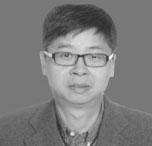
Minyi Guo received his PhD degree in information science from University of Tsukuba, Japan in 1998. Currently he is the Zhiyuan Chair professor and chair of the Department of Computer Science and Engineering, Shanghai Jiao Tong University (SJTU), Shanghai, China. Before joining SJTU, Dr. Guo was a professor of the School of Computer Science and Engineering, University of Aizu, Aizu-Wakamatsu, Japan. Dr. Guo was awarded the National Science Fund award for Distinguished Young Scholars from the National Natural Science Foundation of Science (NSFC) in 2007 and was supported by the Recruitment Program of Global Experts in 2010. His present research interests include parallel/distributed computing, compiler optimizations, embedded systems, pervasive computing, and cloud computing. He has more than 300 articles in major journals and international conferences in these areas. Dr. Guo received five best paper awards from international conferences. He was associate editor of IEEE Transactions on Parallel and Distributed Systems and IEEE Transactions on Computers. Dr. Guo is a senior member of Institute of Electrical and Electronics Engineers (IEEE) and is a member of Association for Computing Machinery (ACM) and China Computer Federation (CCF).

Jingyu Zhou received his PhD degree in computer science from University of California, Santa Barbara in 2006. He is currently an associate professor at Shanghai Jiao Tong University, Shanghai, China. He is interested in distributed systems, information retrieval, and security. He has published more than 40 papers at various conferences and in journals, including International Conference on World Wide Web, ACM/IEEE Conference on High Performance Networking and Computing, IEEE Transactions on Parallel and Distributed Systems, IEEE Transactions on Big Data, and International Conference on Dependable Systems and Networks. He has served as a Program Committee member for more than 20 international conferences.
Font size:
Interval:
Bookmark:
Similar books «Pervasive computing: concepts, technologies and applications»
Look at similar books to Pervasive computing: concepts, technologies and applications. We have selected literature similar in name and meaning in the hope of providing readers with more options to find new, interesting, not yet read works.
Discussion, reviews of the book Pervasive computing: concepts, technologies and applications and just readers' own opinions. Leave your comments, write what you think about the work, its meaning or the main characters. Specify what exactly you liked and what you didn't like, and why you think so.


